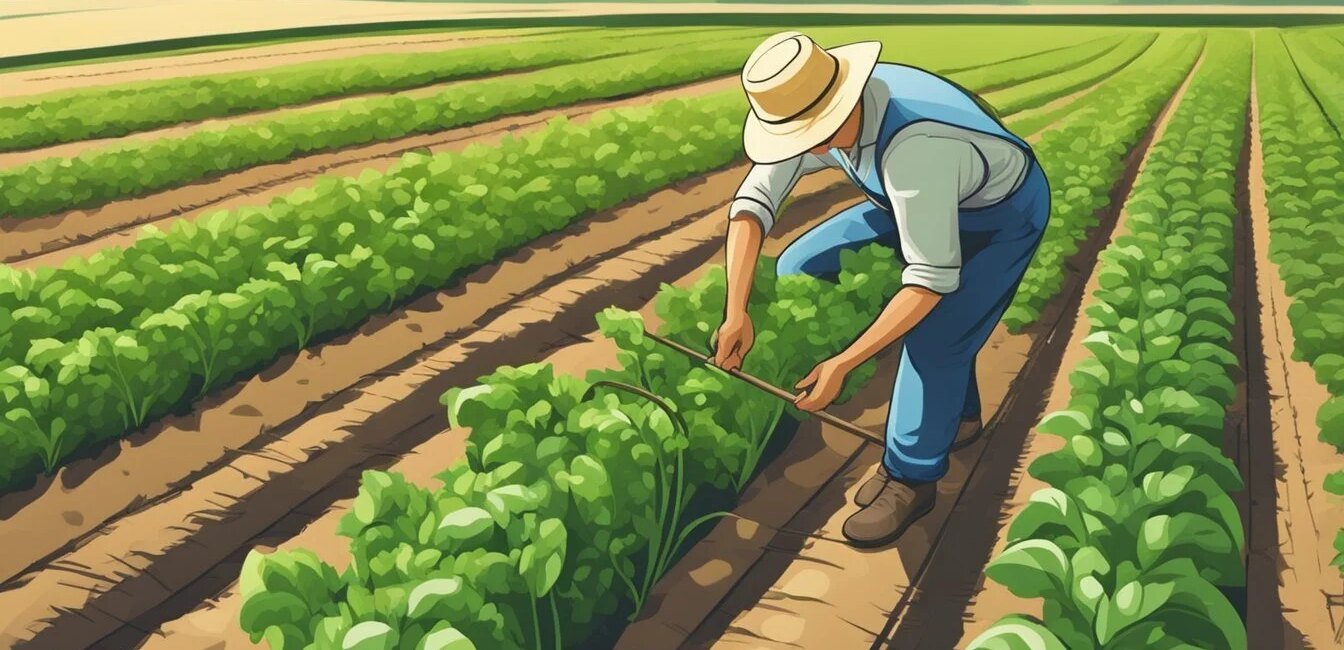
In a world where climate change, soil degradation, and unpredictable weather patterns are reshaping the way we grow food, farmers face the challenge of producing more with fewer resources. This is where Sustainable Farming Practices step in—not just as an environmental choice, but as a necessity for long-term food security. By combining traditional knowledge with innovative methods, these practices help maintain soil health, conserve water, reduce waste, and protect biodiversity, all while ensuring farms remain profitable.
Sustainable agriculture isn’t just about “going green.” It’s about building farming systems that can withstand challenges—whether it’s a drought, pest outbreak, or market fluctuations—without compromising productivity. The goal is simple: create a balanced ecosystem where the land thrives, the farmer prospers, and communities have access to healthy, safe food.
The beauty of sustainable techniques lies in their adaptability. From small family-owned farms to large commercial operations, the methods can be tailored to suit different scales and climates. In this article, we’ll explore proven techniques that not only increase yield but also enhance resilience, giving farmers the tools they need to succeed in a rapidly changing agricultural landscape.
Crop Rotation for Long-Term Soil Fertility
Crop rotation is one of the oldest yet most effective sustainable techniques. By alternating different crops in the same field across seasons, farmers prevent soil nutrient depletion and reduce pest cycles. For example, rotating nitrogen-fixing legumes like beans or lentils with cereals such as wheat or maize helps maintain soil balance without excessive chemical fertilizers.
This approach naturally breaks pest and disease cycles, as many harmful organisms thrive only when their preferred host plants are grown continuously. Additionally, crop diversity encourages a healthier soil microbiome, which plays a crucial role in nutrient availability and water retention.
Modern farmers often use advanced planning tools to design rotation schedules that maximize both yield and environmental benefits. When paired with minimal tillage or organic soil amendments, crop rotation becomes a cornerstone of a productive, resilient farming system. Over time, this practice reduces input costs, improves soil structure, and ensures the land remains fertile for future generations.
Conservation Tillage to Protect Soil Structure
Traditional plowing methods may prepare fields quickly, but they can also lead to soil erosion and moisture loss. Conservation tillage minimizes soil disturbance, allowing organic matter to accumulate and protecting the soil from wind and water erosion.
By leaving crop residues on the surface, this technique improves water infiltration and moderates soil temperature. Farmers practicing conservation tillage also report lower fuel costs and labor hours, making it both an ecological and economic win.
In areas prone to drought, reduced tillage helps retain moisture longer, ensuring crops have a better chance of surviving dry spells. Over time, this method builds soil carbon, enhancing fertility while contributing to climate change mitigation.
Integrated Pest Management (IPM) for Reduced Chemical Use
IPM combines biological, cultural, mechanical, and chemical methods to manage pests in the most efficient and least harmful way possible. Rather than relying solely on pesticides, farmers introduce natural predators, plant pest-resistant varieties, and use crop rotation or trap crops to minimize pest populations.
Chemical controls are used only when absolutely necessary, reducing the risk of resistance buildup and environmental contamination. IPM not only protects beneficial insects like bees but also improves farm biodiversity—a key factor in resilience.
Agroforestry for Biodiversity and Shade
Integrating trees into farming systems offers multiple benefits. Trees act as windbreaks, reduce soil erosion, and provide habitat for pollinators and pest predators. Their deep roots help recycle nutrients and stabilize the soil.
In hot climates, agroforestry systems also provide shade for crops and livestock, reducing heat stress and improving overall farm productivity. Additionally, farmers can diversify income streams by harvesting timber, fruits, or nuts from these trees.
Water-Smart Irrigation Techniques
Efficient water use is crucial in today’s unpredictable climate. Drip irrigation, for example, delivers water directly to plant roots, reducing evaporation and runoff. This method not only saves water but also prevents overwatering, which can lead to root diseases.
Rainwater harvesting and the use of soil moisture sensors further help farmers optimize irrigation schedules. These techniques ensure that crops get the right amount of water at the right time, leading to healthier plants and better yields.
The Future of Sustainable Agriculture
The shift toward sustainability is not just an environmental choice—it’s an economic one. Farmers adopting these techniques often see improved yields, reduced input costs, and stronger resilience against climate extremes.
By embracing Sustainable Farming Practices, we move toward an agricultural system that feeds people while regenerating the planet. The journey may require investment and adaptation, but the long-term rewards—both for farmers and the Earth—are well worth it.
If you want, I can also create a short, visually appealing infographic version of this article for Friend of The Earth that would make it even more engaging for website visitors and improve time-on-page metrics.

